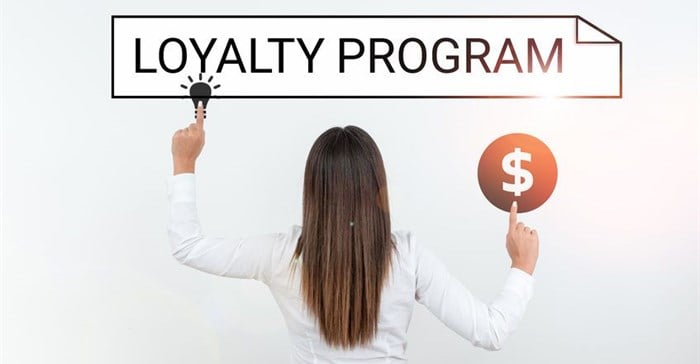In South Africa, loyalty programme owners are working hard to meet their customers and members where they are, now.

Source © Niall Wiggan
123rf In South Africa, loyalty programme owners are working hard to meet their customers and members where they are, now
This is evident through the rise in rewards that add value to their members’ lives and help them with essential goods through tough economic times.
Examples of this range from grocery vouchers right through to solar kits to help with the load shedding blues.
“We are also seeing greater redemption rates of points earned as consumers use their loyalty points to supplement income gaps to cope with the raging cost-of-living crisis,” says Gordon Wilson, CLMP (Certified Loyalty Marketing Professional) and business development director at Achievement Awards Group.
Operational efficiencies by better aligning reward offerings
“Loyalty programmes have grown tremendously in scope over the last few years – the challenge for programme owners is to ensure that their programmes meet customer expectations and add value to their core products."
Economic pressures are also seeing brands and programme owners looking towards achieving better operational efficiencies by better aligning reward offerings to customer needs and fine-tuning the scope of the programme rewards to focus on relevance, which in turn has the benefit of reducing costs and improving loyalty and engagement.
“There is a distinct move to loyalty partnerships and eco-systems to increase utility and add greater value to loyalty programme members – we’re seeing more partnerships across service providers to reach new markets, reduce costs and grow revenue.
“Loyalty programmes with tiered benefit structures are also likely to undergo changes to those tiers in terms of ‘qualification’ to meet loyalty member demand. As one example, earlier this year Starbucks adjusted its formula to make it easier to earn and redeem rewards for iced coffee, a trend driven by Gen Z consumers as iced coffee has accounted for at least 60% of Starbucks’ total sales every quarter since early 2021,” explains Wilson.
Retain customers, increase customer engagement and boost sales
As the economy hardens and household budgets come under untenable pressure, loyalty programmes have become particularly important to help businesses retain customers, increase customer engagement and boost sales.
When times are tough, customers are more likely to switch to cheaper alternatives or cut back on spending – this is where a well-designed loyalty programme can help businesses to retain these customers by offering rewards and incentives that make them feel valued and appreciated, and most of all, add tangible value to customers that they keep coming back for.
“In a tough economy, businesses are often competing for a smaller pool of customers. A loyalty programme can give businesses a competitive advantage by offering a unique value proposition that sets them apart from their competitors, and gives that extra value needed to retain customers, increase engagement, and generate revenue.
“By creating a loyalty programme that is tailored to the needs and preferences of their customers, businesses build stronger relationships and create a loyal customer base that is more likely to stick with them through difficult times,” explains Wilson.
Key trends in loyalty programmes
Some of the key trends unfolding in loyalty programmes in a rapidly changing and hardening socio-economic environment include:
- The power of data and analytics to drive loyalty design
The key trend in loyalty programmes is to create a more granular, personalised, and engaging experience for loyal customers, providing them with more value and benefits that talk to their unique needs and circumstances.
To this end, data and analytics are key to better understanding loyalty members, and tailoring rewards and experiences to their specific needs and preferences.
“Data is vital to segment customers based on demographics, behaviour, and other factors, and in turn tailoring the loyalty program to diverse groups of customers, with incentives that are most relevant and appealing to each segment.
“Through data analysis, businesses can identify which rewards are most popular among their customers, and which rewards are most effective in driving engagement, behaviour, and retention. This helps to optimise reward offerings and maximise program effectiveness, while reducing program costs,” says Wilson.
- Brand switching
As the cost of living keeps rising, driven by rampant inflation, consumers want better deals and greater value from brands – and the rewards need to be tangible.
Brand owners will be under pressure to retain customers, and so we can expect to see more instant cashback deals and value-driven promotions like ‘3-for-2’ or ‘buy-one-get-one free’.
- Next level customer experience
A seamless customer experience is more important than ever, and brands will need to bring their A-game on this front with emerging technologies to enhance their customers’ omnichannel, surround-sound experience of the brand or service.
Loyalty programmess are increasingly being integrated with digital channels such as mobile apps, social media and online stores which gives customers easy access to their rewards and ability to redeem them online.
- The rise of intrinsic motivation
Traditional loyalty programmes have relied on extrinsic motivation in the form of conditional rewards - ‘do this…get that’ - to drive behaviour change and engagement.
However, as time passes and programmes mature, extrinsic rewards lose their appeal and effectiveness, and with it, engagement levels drop.
"We are now seeing increasing use of intrinsic motivation to build brand affinity. One such way is through gamification to stimulate curiosity, or appeal to a consumer’s personal interest or enjoyment outside of transactional interactions."
The loyalty programmes that win long-term are the brands making use of intrinsic motivation to form an emotional connection with their consumer, resulting in improved engagement, enhanced brand loyalty and customer lifetime value, and best of all, their customers are their greatest advocates.
- Gamification and the rise of Crypto rewards and NFTs
Gamification is an excellent mechanism to drive engagement and in the past year, big brands like Starbucks are offering non-fungible token (NFT) rewards as an extension of their existing loyalty programme by leveraging Web3 technology.
In the 2022 Delphi Report on The Future of Crypto Rewards, a Veteran CLMP from North America comments, “Any brand that is not experimenting with Crypto Rewards and NFTs is already behind”.
- Data analytics and AI
Research shows that, companies are enamoured with data analytics to the extent that the question being asked is no longer whether they should invest in analytics, but how much!
They want to make better decisions, and these better decisions come from an ability to turn massive amounts of data into something usable and understandable.
And thanks to the incredible advances in AI and Large Language Models (LLM), loyalty programmes are now able to process data faster and more accurately, have better predictive capabilities, reduce costs, and ultimately, boost customer experience.
The end goal is to get granular customer insights quickly and embed them in the day-to-day operations and decision making of the organisation, ensuring that the right offer gets to the right person, at the right time.
- The rise of ESG
Sustainability is becoming more of a focal point for organisations everywhere and loyalty programmes can play a significant role in encouraging behaviour change such as recycling and reusing products, buying ethically sourced products, and living a healthier lifestyle.
In fact, in research conducted by Kearney, they found that “A modern loyalty programme could deliver both business and ESG outcomes by creating a “currency” to recognise and reward customers who make choices that reinforce a company’s [ESG] position”.
The most successful loyalty programmes are those that reward with meaning – reinforcing behaviours that drive loyalty with rewards that are personal, meaningful, and memorable, giving customers the opportunity to choose the rewards that they really want and need, right now.





































